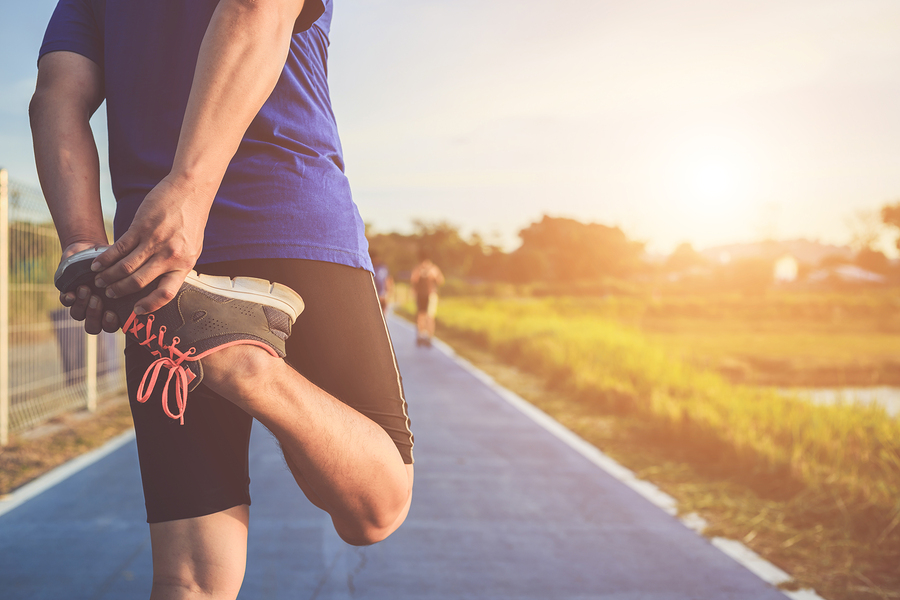
Often when the New Year comes around there are a number of ‘improvements’ people implement in to their lives. This may be a healthy eating routine, increased exercise, improved sleeping routines, stopping bad habits etc. This is great and we at Room One physiotherapy are great advocates for leading a healthier lifestyle and challenging ourselves both physically and mentally! Despite this, often our bodies do not respond as favourably as anticipated following these changes and in particular increased exercise can lead to issues for some.
Today we want to talk about a particular structure in the body which commonly does not respond well to sudden changes in exercise. These structures are called tendons. Tendons are fibrous connective tissues which attaches our muscles to our bones and transmits the mechanical force of muscle contraction to the bones which allows us to move. An example of a tendon is your Achilles which can be felt at the bottom of your calf muscle running in to your heel bone which we will use as an example in this blog. We commonly treat other tendons all over the body such as the patellar, hamstring, rotator cuff and wrist extensor tendons.
Like all tendons, the Achilles tendons does not like change. When its role of muscle force transmission into the foot and ankle considerably increases it can cause pain known as Achilles tendinopathy. This is prevalent in 6% of the population and can occur at the bottom (insertional) or at the mid portion of the achilles. Tendinopathy occurs when the intensity, frequency or volume of tendon loading exceeds the current capacity of your tendon (see the graph below). This often means doing too much of something too soon after doing too little for too long. For example if you haven’t ran for 6 months and you decide to go out and do an intense 5K run, this is more likely to cause unhappy tendons/ Achilles Tendinopathy.

What can I do to reduce the likelihood of having Achilles tendinopathy?
Like most injuries, you can never 100% prevent Achilles tendinopathy from happening however you can highly reduce the likelihood.
1) Take things steady when restarting exercise!

Remember, tendons don’t like change. The best thing you can do is to take things easy and build your exercise up gradually. This means your tendons will be gradually loaded which will in turn gradually increase the tendons capacity to cope with the exercise that you are doing. For example, if you haven’t ran in several months and are keen to get back to it, a good way of re-introducing it is to break it up into a run-walk cycle. Remember, it is always dependent on your individual capacity so if you are an inexperienced runner, running for 20 seconds followed by walking for 30 seconds may be a good way to start. Alternatively if you have previously done 5/10K’s then 1km run followed by 2 minutes rest may be suffice.
2) Warm Up
Ensure to take at least 5-10 minutes to warm up your body for exercise. This will always depend on what exercise you are taking part in and what muscles are being utilised most. For the Achilles a good warm up may consist of some single leg heel raises, calf stretches and hopping.
3) Listen to your body!
Often the best way to manage your exercise is to listen to how your body is responding. If your feeling extremely fatigued during exercise then ensure to take some rest time. Specifically for tendons a good marker is your level of pain and stiffness the following day. Slight general pain and stiffness the following day is very common particularly if you have not exercised for a while. However, if you notice symptoms specifically in the Achilles it is likely that you have overloaded that tendon the previous day. You should therefore rest and/or exercise in a way which you are not loading that area and do slightly less the next time you are doing that particular exercise.
It’s too late! I think I may have Achilles tendinopathy.
If you think you that you may have tendon pain/tendinopathy don’t panic! It is very manageable and with the right guidance you will be able to get back your normal activities. As each individual tendon is different we highly recommend booking a consultation to come and see us here at Room One Physiotherapy. We will be able to find your individual cause and help guide you back to your normal activities. In the meantime there are things that you can be doing to get a head start.
1) Activity Modification
You need to adapt your activity so that you are not causing further harm to your tendon and therefore reducing its capacity. Activities/exercise which is causing less than a 3/10 score is usually okay. However, you need to be careful. Often tendons take time to respond and as previously mentioned pain/stiffness the following day should also be less than 3/10.
2) Isometrics

Isometrics are a great way of beginning to load the tendon. This means working the muscle without movement and are therefore very tolerable even when you are in pain. Holding at the top of a heel raise is a good way to target the Achilles tendon. We will post a video demonstrating these on our Instagram.
3) Gradual loading

As good as isometric exercises are, you will need to further increase the loading of the tendon in order to build its capacity to perform more challenging activities. This will balance the capacity/loading graph as discussed earlier allowing for a happier tendon! This is the stage where we at Room One can really start to help you getting back to baseline with the correct rehab plan alongside other adjuncts such as shockwave therapy, manual therapy and more.
